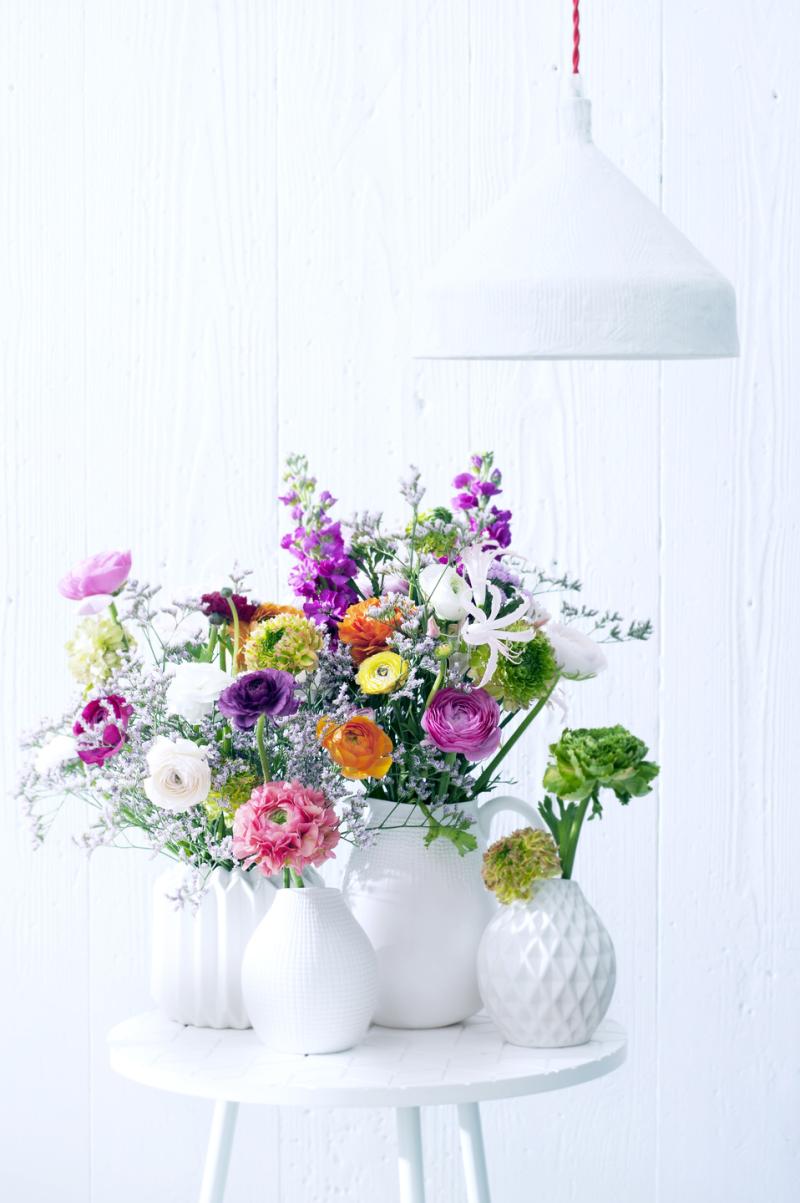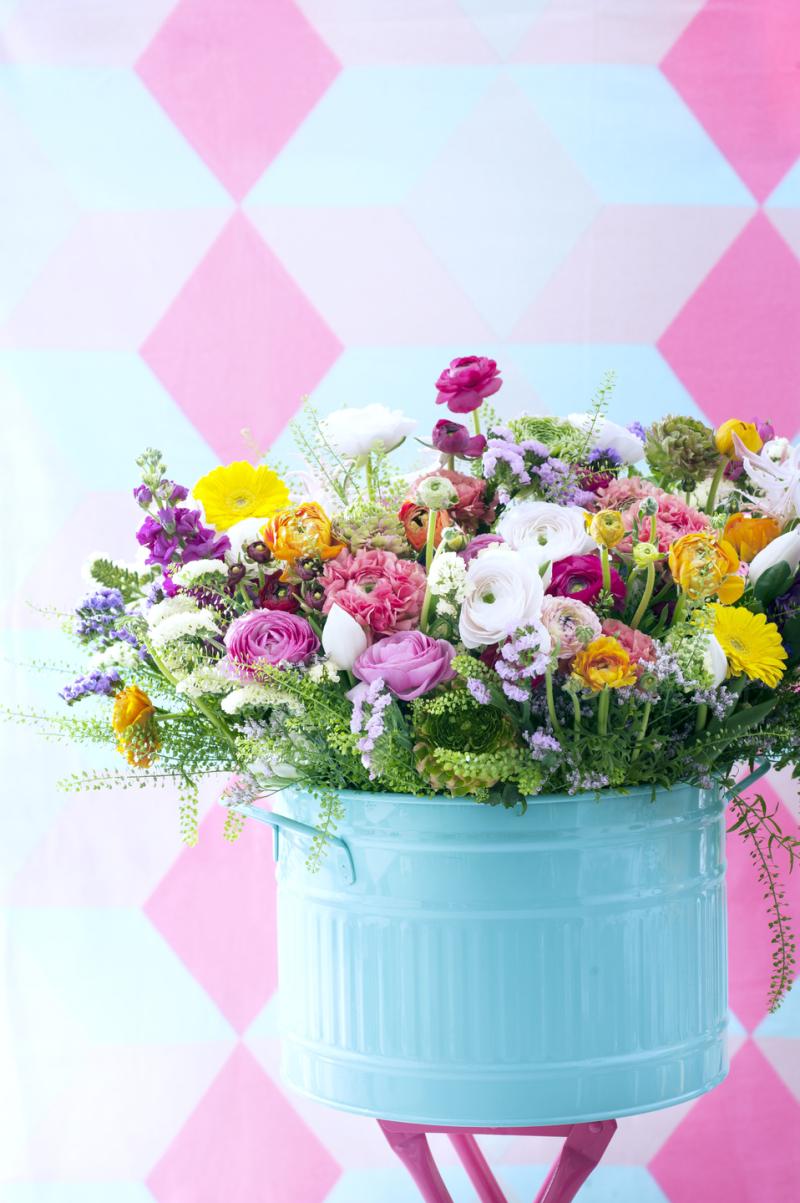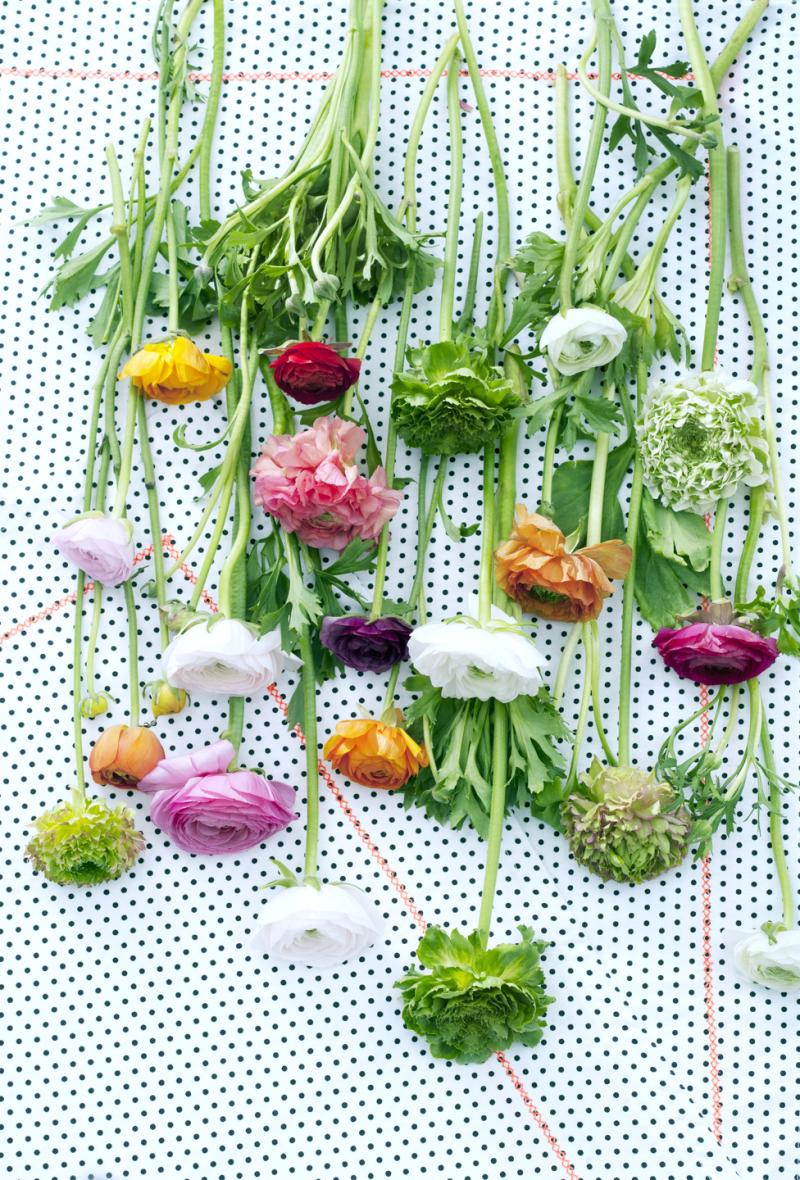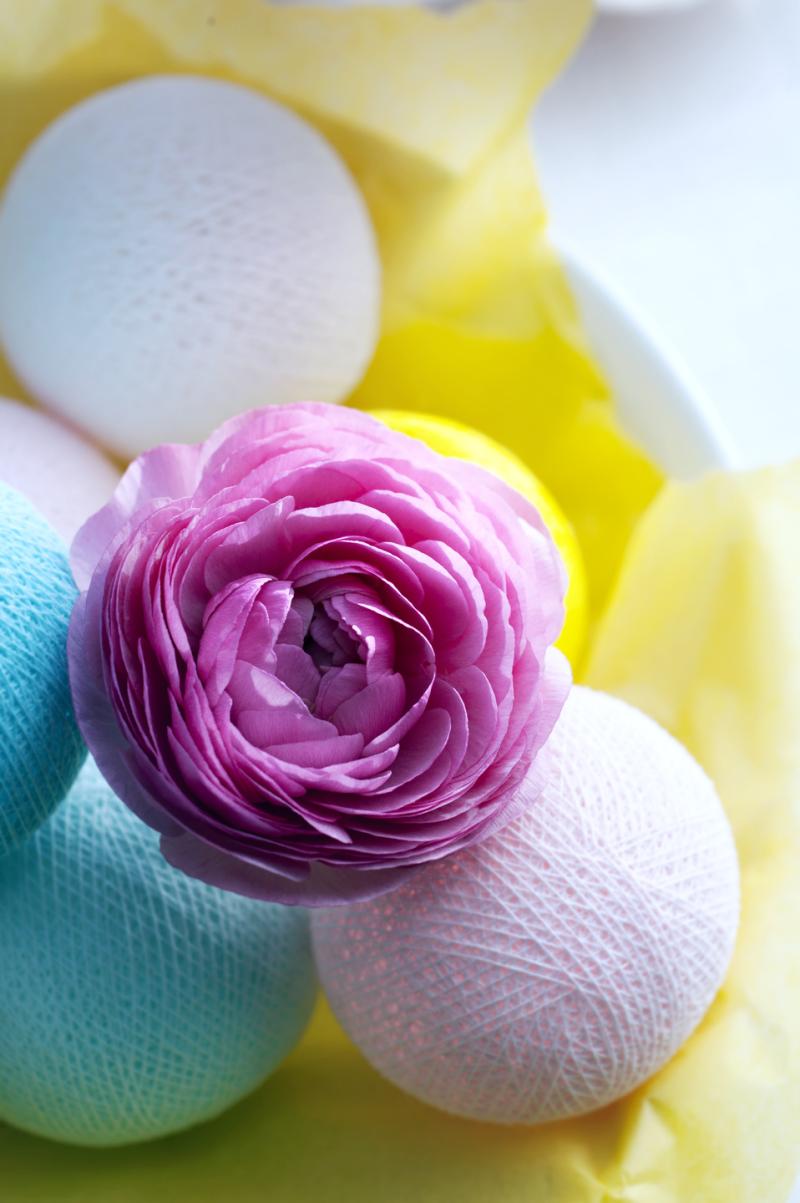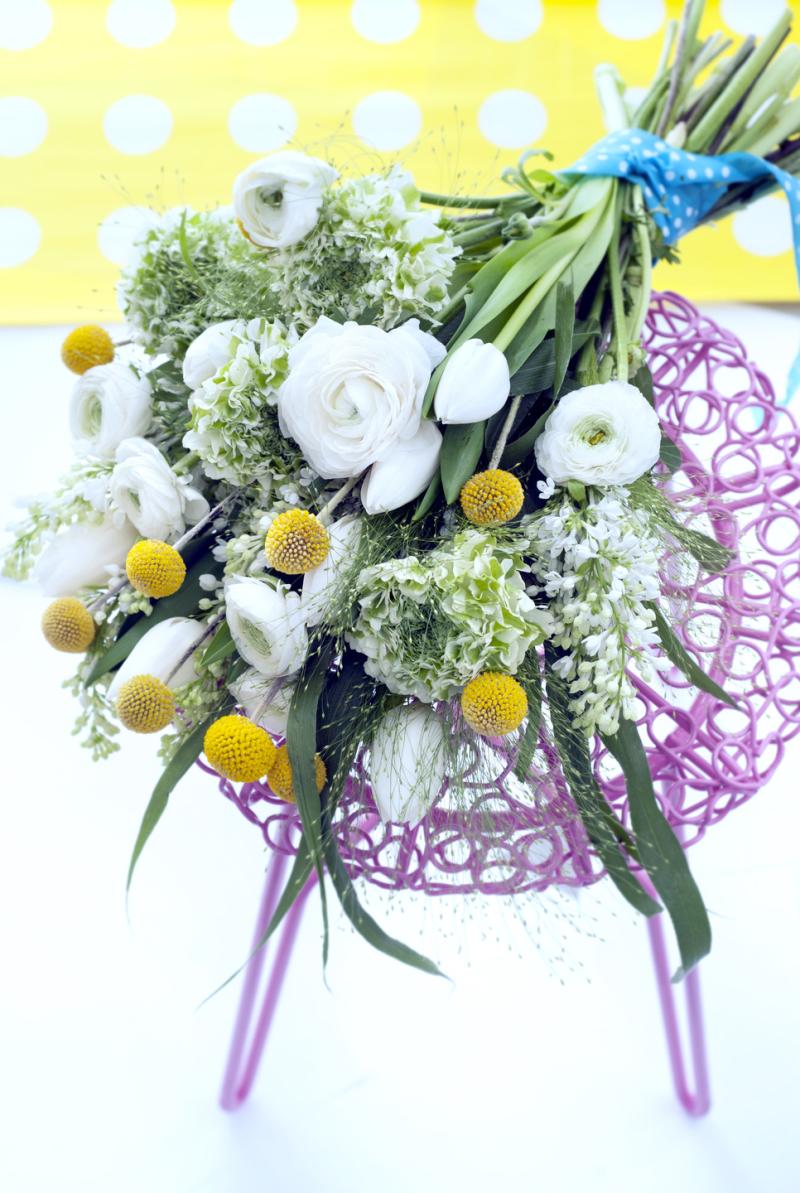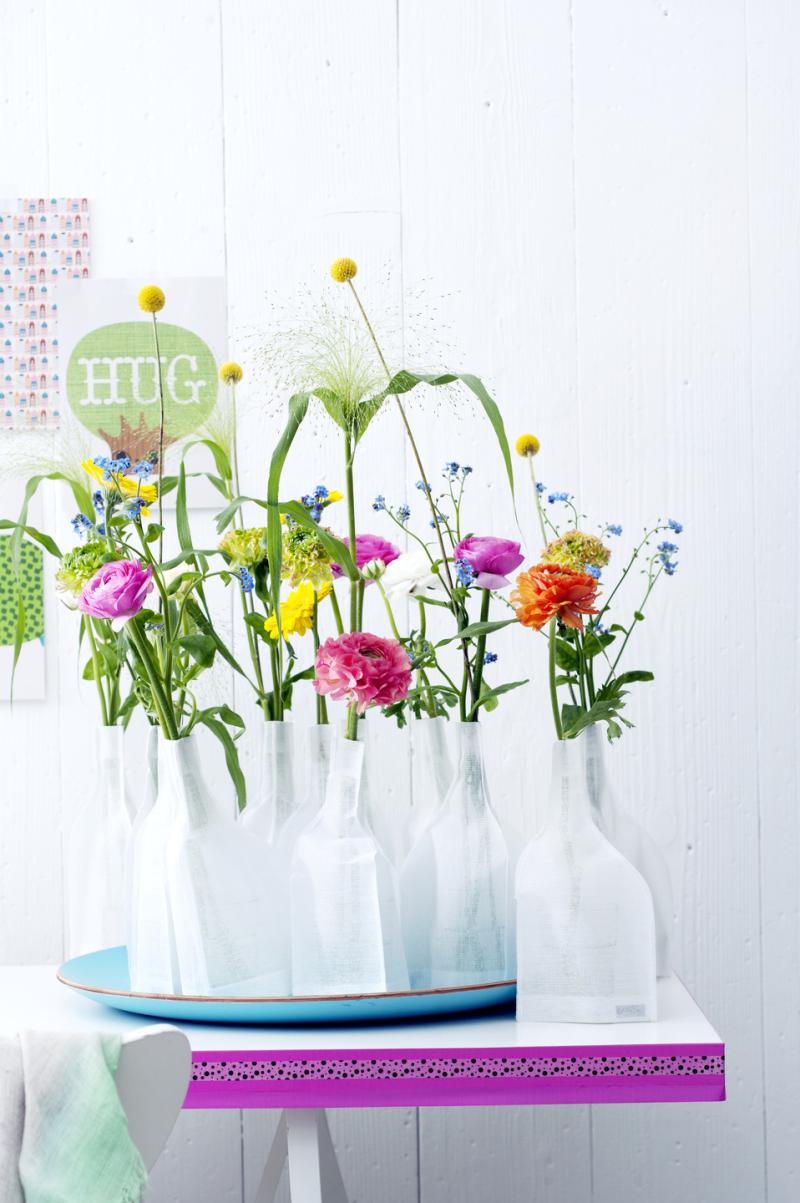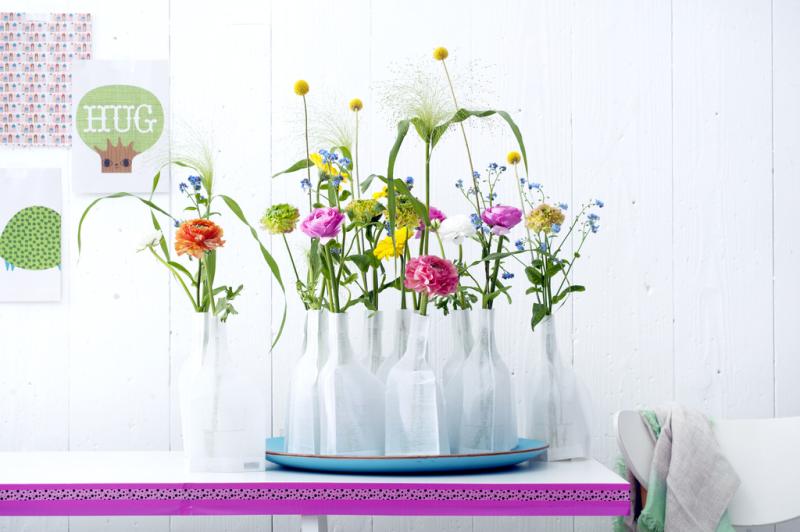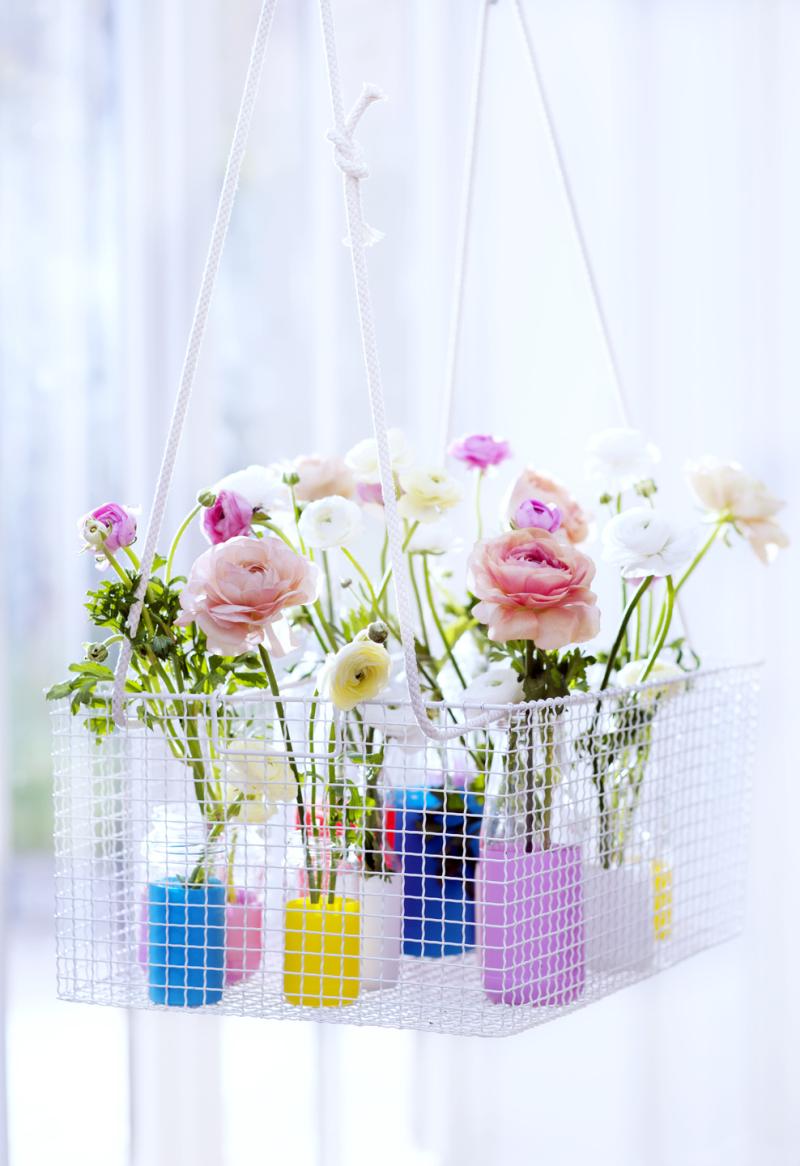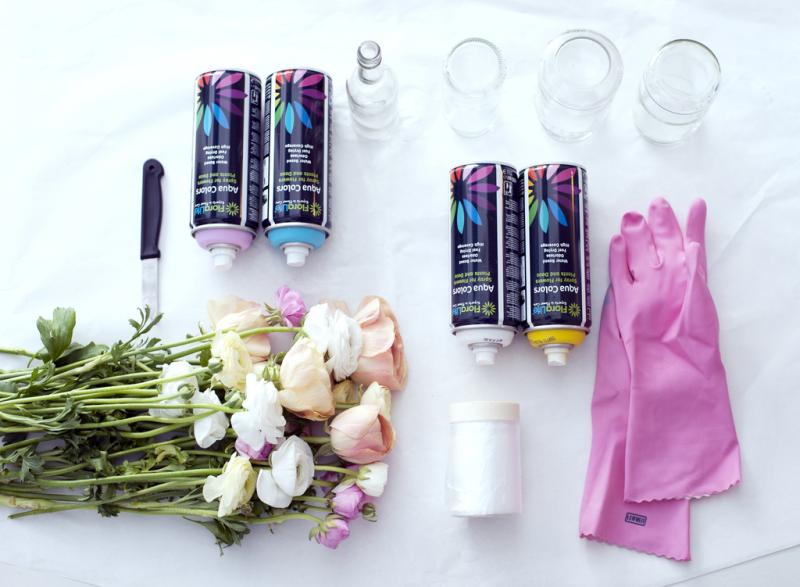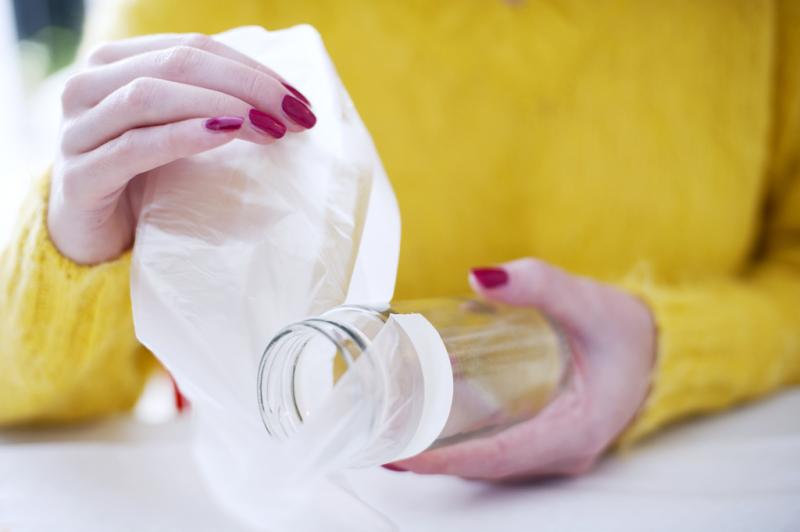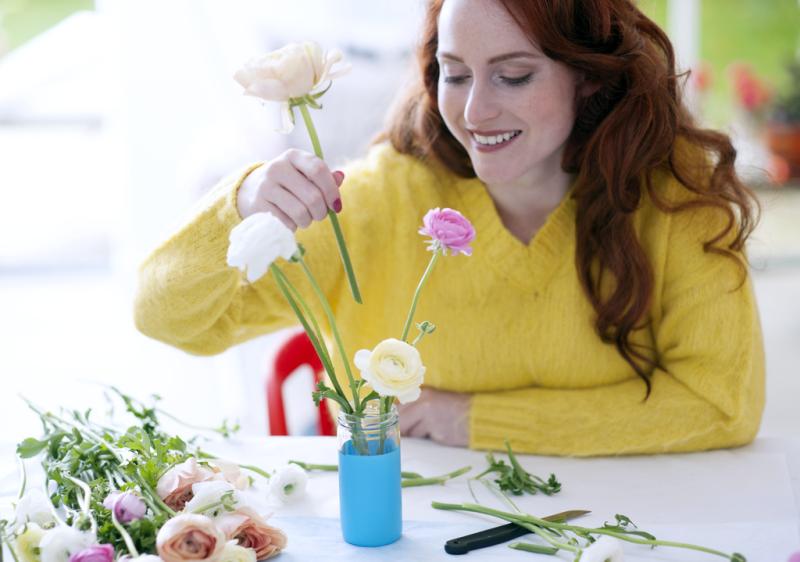Flower Diary 2015 presents the ranunculus
The Flower Diary on Funnyhowflowersdothat.co.uk will focus on the ranunculus from week 9 to week 12. Here the consumer can learn about all aspects of the flower whose name is Latin for 'little frog'. Will you be helping this flower to leap into view during these weeks?
What is the Flower Diary?
The Flower Diary 2015 features 15 flowers sorted by seasonal availability. The diary tells the story of the specific flower, and offers inspiration and beautiful images. Consumers can find the diary on Funnyhowflowersdothat.co.uk and can share the content via social media.
Photography in line with Green Sector Trends 2015
The new images of the fifteen flowers have been photographed in line with the Green Sector Trends 2015*. This is an interpretation of the latest consumer trends focusing specifically on the horticulture sector, both indoors and outdoors. It consists of the key style trends: Unexpected Wild, Eco Luxe and The Happy Life. Each flower in the Flower Diary has been photographed in the most appropriate style. For the ranunculus this is the The Happy Life trend.
The Happy Life trend
Life is a big party that you should celebrate every day! This approach results in a cheerful and colourful interior. It is handled in a playful way. Homes appear to be decorated as if a party could start at any moment. There is extensive use of a variety of patterns. Cheerful colourful bouquets are essential. This joy and optimism results in a wave of colour in interior and exterior products, whereby bright colours and pastels are mixed together.
The ranunculus, from the greenhouse to the vase
It might not be spring yet, but with cheerful ranunculus it feels closer. What consumers might not know is that this flower originates from Central Asia, but is planted in the Netherlands as a bulb in a cold greenhouse. This is done in the autumn. When the sun starts to shine in February, the flowers (which are still on the plants at that point) perk right up. They are harvested and the ranunculus is ready for your shop.
Colours and shapes of the ranunculus
The ranunculus comes in white, yellow, orange, pink, red and purple. The ranunculus is the result of hybridisation and selection of the ranunculus asiaticus. In terms of shape you can choose from well-filled flowers, lightly filled flowers, single or half-filled flowers.
Care tips for consumers
Give your customers the following tips to ensure that they enjoy their ranunculus for a long time.
• Cut a piece off the stem.
• Place the flowers in a clean vase with clean tap water and bulb flower food. Not too much water, because the hairy stems can't tolerate it.
• Ranunculus are thirsty; your customer should therefore top the vase up regularly.
• Place the vase in a cool spot away from draughts. This will ensure that the flowers remain beautiful for a long time.
Inspiration for a ranunculus bouquet
For a fabulous full spring bouquet combine a mixture of ranunculus with other seasonal flowers. Hence the example bouquet supplements the ranunculus with two types of Statice, namely Statice mixed and the finer Statice Pink Emile. It also includes tulips, nerine and stock and a novelty, namely Thlaspi Green Bell. Together these flowers create an adorable bouquet.
Ranunculus symbolism
The ranunculus symbolises charm, a nice meaning to share with your customers. In Victorian times the message by giving a bunch of ranunculus was: "I feel you have many charms."
The Flower Diary 2015
The Flower Diary is an initiative by Funnyhowflowersdothat.co.uk in conjunction with FloraHolland and the VBW, who have selected the 15 flowers in the diary. With this diary, the Flower Council of Holland is achieving its objective to draw the consumer’s attention to seasonal flowers, product-specific promotions, and flowers that are available all year round.
The Flower Diary 2015 consists of the following flowers:
- Week 9 to 12 Ranunculus
- Week 11 to 13 Carnation
- Week 14 to 18 Gerbera
- Week 19 to 22 Peony
- Week 23 to 26 Lily
- Week 27 to 30 Sunflower
- Week 30 to 32 Calla
- Week 32 to 35 Hydrangea
- Week 36 to 40 Chrysanthemum
- Week 40 to 42 Alstroemeria
- Week 42 to 45 Lisianthus
- Week 45 to 48 Orchid
- Week 48 to 52 Amaryllis
* The Green Sector Trends 2015 have been created in collaboration between Tuinbranche Nederland, Branchevereniging VHG, iBulb and the Flower Council of Holland.

